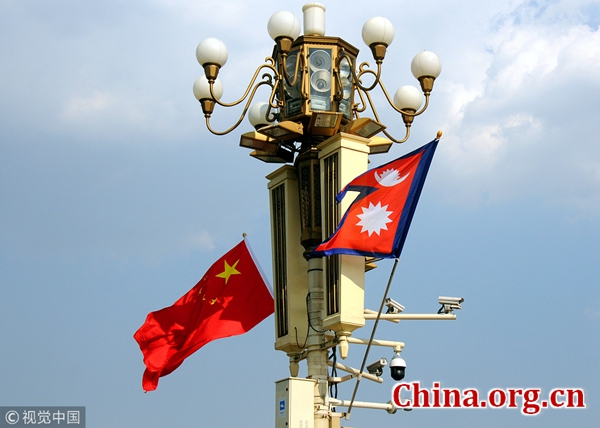Sino-Nepalese ties to see new momentum in 2019
- By Ritu Raj Subedi
 0 Comment(s)
0 Comment(s) Print
Print E-mail China.org.cn, February 21, 2019
E-mail China.org.cn, February 21, 2019

Newly-appointed Chinese ambassador to Nepal Hou Yanqi says 2019 will be a crucial year in enhancing the bilateral relationship. And there are good reasons behind her optimism.
Officials from both sides are in negotiations to identify joint projects to be implemented under the Belt and Road Initiative (BRI), hoping to achieve a breakthrough in selecting the key ones this year.
They are likely to fix the financial modality of the most talked-about Kathmandu-Kerung (Gyirung) cross-border railway considered a potential game changer in the country's economic transformation as well as the enhanced connectivity, growing trade and further integration within the region.
As the Communist Party of Nepal (CPN)-led government enters its second year in office, China is preparing to celebrate the 70th anniversary of the founding of the People's Republic of China. In April, it is holding the second Belt and Road Forum for International Cooperation to which Nepal plans to send a high-level delegation.
China is one of the largest foreign investors in Nepal. Indeed, the Nepali government is counting on continued strong Chinese investment for building critical infrastructure networks and spurring economic growth, thereby realizing its motto of "Prosperous Nepal, Happy Nepali."
Since joining the BRI in 2017, Nepal and China have been engaged in the work of deciding the projects that need to be prioritized. However, a section of people, including members of main opposition party, Nepali Congress, have been invoking the debt-trap theory to nip the BRI projects in the bud. This particularly applies to the Kathmandu-Kerung railway.
Prime Minister KP Sharma Oli has dismissed the argument, stating that Nepal is not going to fall into any debt trap. "Instead, BRI will benefit us. We are aware of our national interests and of our priorities," he has stated. He also expressed confidence that construction of the railway, a key component in landlocked Nepal's drive for secure trade routes to the international market, will move ahead as planned.
Meanwhile, Nepal and China have recently witnessed strong economic cooperation, tourism growth and cultural exchanges at the desired pace.
China's Shanghai Construction Group Co. Ltd. has completed the Koteshwor-Kalanki road expansion project and an underpass at Kalanki, substantially improving traffic movement in the capital city of Kathmandu. The Chinese government gave 5.13 billion rupees towards building the 10.5-km eight-lane road as part of improvement on the 27-km Kathmandu Ring Road.
As a symbol of Nepal-China friendship, the Ring Road was first constructed with Chinese financial assistance as long ago as 1977.
Nepal has also become a favored holiday destination for an increasing number of Chinese tourists. Their numbers grew by 48 percent in 2018 over the previous year. Over 153,602 Chinese visited Nepal, coming to enjoy cool weather in summer and comparative warmth in winter.
During the recent Spring Festival holidays, many Chinese tourists flocked to the scenic cities of Kathmandu, Pokhara and Chitwan.
To mark the Chinese Lunar New Year, cultural troupes from the Tibet Autonomous Region of China and the Sichuan provincial capital of Chengdu performed traditional dance and song routines in Kathmandu, enthralling a diverse audience comprising politicians, diplomats, business community, social workers and the media, among others.
Ritu Raj Subedi is Deputy Executive Editor of The Rising Nepal of The Rising Nepal.
Opinion articles reflect the views of their authors, not necessarily those of China.org.cn.
If you would like to contribute and have specific expertise, please contact us at opinion@china.org.cn.






Go to Forum >>0 Comment(s)